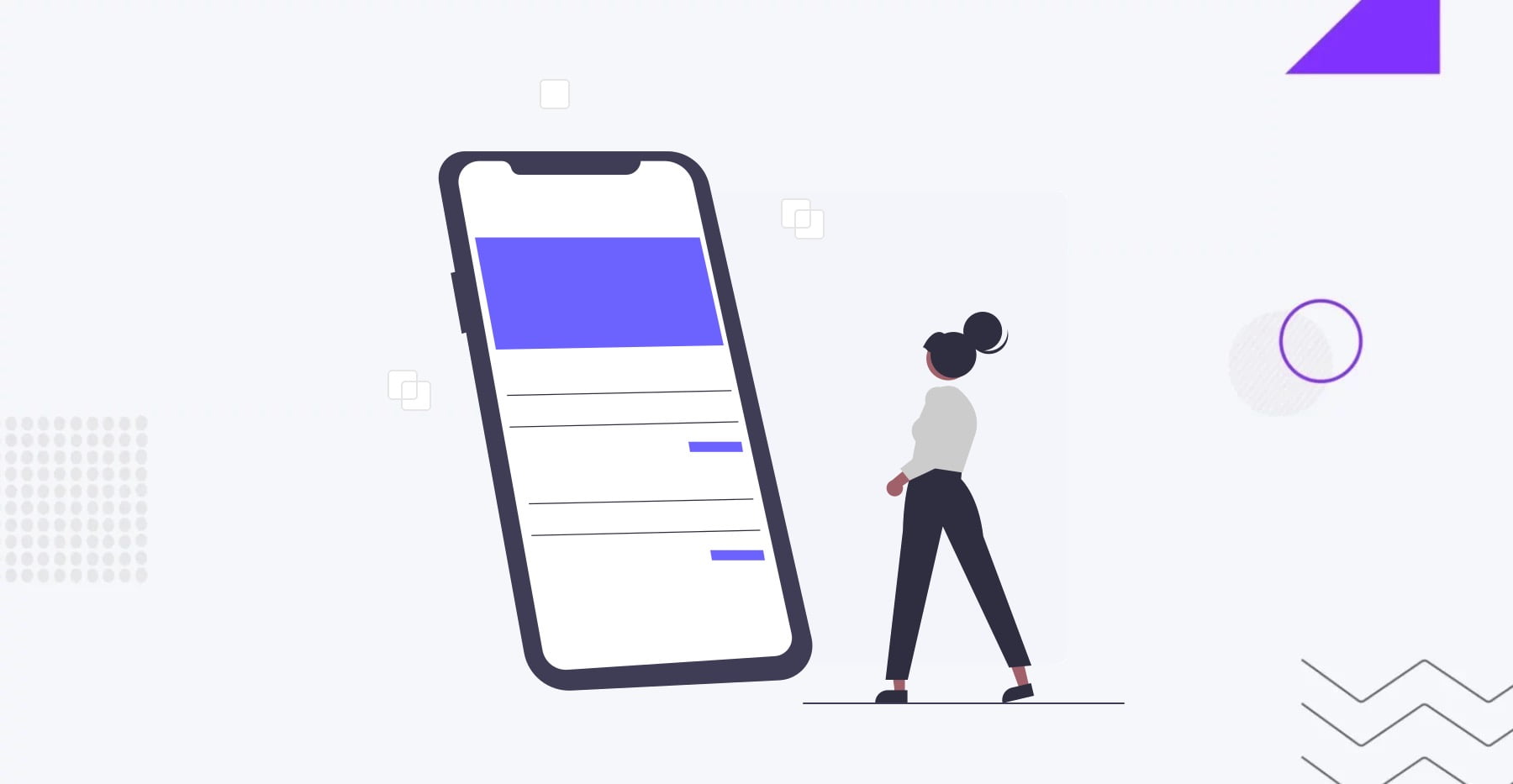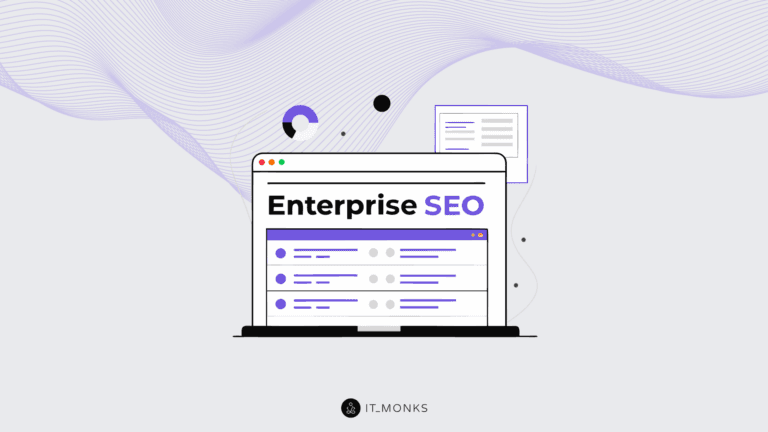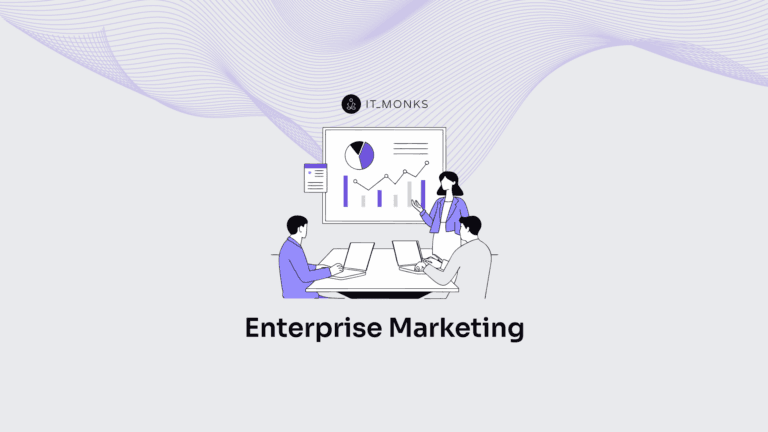Ecommerce Mobile Websites: Optimization Guide
Table of Contents
Table of Contents

Mobile and ecommerce go hand-in-hand. As the world becomes increasingly digital, the importance of mobile ecommerce websites cannot be overstated. With consumers shifting their shopping habits to mobile devices, businesses must prioritize mobile-firstMobile-firstDesigning and developing a website or application with the mobile user in mind as the primary focus.
More About Mobile-first website strategies to stay competitive in the ecommerce landscape. This has led to a significant shift towards a mobile-first approach in ecommerce, where websites are designed primarily for mobile users before being adapted for desktops. If you are an ecommerce website owner or are only planning your website’s launch, consider following the steps described in this ecommerce mobile website guide. Below, we cover everything you need to create a competitive ecommerce website, from tips on choosing the right mobile ecommerce platform to mobile ecommerce best practices. Let’s dive in!
Why Mobile Ecommerce Websites Matter
Mobile devices have become the preferred medium for online shopping. Recent statistics reveal a substantial and growing percentage of ecommerce transactions are conducted via mobile devices. This trend underscores businesses’ need to optimize their websites for mobile users to capture this market segment effectively.
Understanding the difference between mobile-first and mobile-friendly approaches is crucial. A mobile-friendly website is designed for desktops and later adjusted to function on mobile devices. While this approach ensures compatibility, it may only partially optimize the user experience on smaller screens. On the other hand, a mobile-first strategy prioritizes the mobile experience from the beginning. This means designing the website for mobile devices first and then scaling up for larger screens. This approach ensures a seamless, efficient, and user-friendly experience tailored to mobile users’ needs.
Adopting a mobile-first design strategy offers several advantages. Firstly, it provides an enhanced user experience (UX) as the design is inherently suited for mobile use, resulting in higher customer satisfaction and engagement. Secondly, it improves search engine rankings and visibility, as search engines like Google prioritize mobile-friendly websites in their algorithms. Lastly, it leads to increased sales conversions and a broader audience reach, as users find it easier to navigate and complete purchases on mobile-optimized sites.
Need to launch a mobile-first site?
Advantages and Limitations of Mobile Ecommerce Sites
While the shift towards mobile-first strategies in ecommerce presents some challenges, the benefits far outweigh the limitations. Businesses prioritizing mobile optimization can enjoy enhanced user experiences, better search engine rankings, and increased sales conversions, positioning themselves for success in the increasingly mobile-centric digital marketplace. Let’s consider the major pros and cons of ecommerce mobile websites.
Advantages
- Enhanced User Experience (UX) and Customer Engagement: Mobile-first designs cater specifically to mobile users, offering a smoother and more intuitive browsing experience. This leads to higher customer engagement and satisfaction levels, which are critical for driving repeat business.
- Improved Search Engine Rankings and Visibility: Search engines favor mobile-friendly websites, resulting in better rankings and increased visibility. This makes it easier for potential customers to find the business online, leading to higher trafficTrafficThe number of visitors or users who visit a particular website.
More About Traffic and more opportunities for sales. - Increased Sales Conversions and Broader Audience Reach: Mobile optimization streamlines the shopping process, making it easier for users to browse products and complete purchases. This can lead to higher conversionConversionA process of turning a website visitor, social media follower, or any other potential customer into an actual paying customer.
More About Conversion rates and the ability to reach a wider audience, including those primarily using mobile devices for online activities.
Need to design mobile-first?
Limitations
- Potential Challenges in Maintaining Consistent User Experience Across Devices: While a mobile-first strategy ensures a great mobile experience, it can sometimes be challenging to maintain a consistent user experience across different devices and screen sizes. Ensuring the website looks and functions well on mobile and desktop requires careful planning and design.
- Technical Complexities in Mobile Optimization: Optimizing a website for mobile can be technically complex. It involves ensuring fast loading times, responsive designResponsive DesignA design technique that allows a website to adapt and respond to the screen size and device on which it is being viewed.
More About Responsive Design, intuitive navigation, and touch-friendly elements, all of which require specialized knowledge and expertise. Continuous testing and updates are also necessary to keep the site performing well on various mobile devices and operating systems.
Mobile Ecommerce Website: Essential Components and Best Practices

Critical components and best practices must be implemented to create a successful mobile ecommerce website. These elements ensure that the website is visually appealing but also functional and user-friendly on mobile devices. Here are the essential components and best practices for optimizing mobile ecommerce websites.
Responsive Design
Responsive design is a web development approach that ensures a website’s layout adjusts seamlessly to different screen sizes and orientations. This is achieved through flexible grids, fluid images, and CSSCSSCascading Style Sheets is a coding language that determines the appearance and layout of a website.
More About CSS media queries.
Why It’s Important: Responsive design is crucial because it provides a consistent user experience across various devices, from smartphones to tablets to desktops. It eliminates the need for separate mobile and desktop versions of a website, simplifying maintenance and ensuring that users have a cohesive experience regardless of the device they use. This adaptability improves user satisfaction, reduces bounce rates, and enhances SEOSEOSearch Engine Optimization involves optimizing various website elements to make it more attractive to search engines like Google, Bing, and Yahoo.
More About SEO, as search engines favor mobile-friendly websites.
Fast Loading Times
Fast loading times refer to the speed at which a website’s content is displayed on a user’s device. Various factors, including server response time, file sizes, and code efficiency, can influence this.
Why It’s Important: Speed is critical in mobile ecommerce design because users expect quick and seamless experiences. Slow loading times can lead to higher bounce rates and abandoned shopping carts, negatively impacting conversions and sales. Moreover, search engines like Google consider page speedPage SpeedThe time it takes for a website page to load fully.
More About Page Speed a ranking factor, meaning faster sites are more likely to rank higher in search results. Techniques like image optimization, leveraging browserBrowserA software application that enables you to view and interact with websites.
More About Browser caching, and minimizing HTTP requests can significantly improve loading times.
For more details on how to optimize your website for faster loading, please refer to our guide on how to reduce loading time of WordPress website.
Intuitive Navigation
Intuitive navigation refers to the ease with which users can find information and move through a website. It involves designing menus, buttons, and links that are straightforward to use.
Why It’s Important: Effective navigation is essential for keeping users engaged and helping them find what they are looking for quickly. Clear and concise navigation becomes even more critical on mobile devices, where screen real estate is limited. A well-designed navigation system enhances the user experience by reducing frustration and smoothing the shopping process. Techniques such as hamburger menus, sticky headers, and prominent search bars can improve navigation on mobile sites.
Optimized Checkout Process
An optimized checkout process is streamlined to make it as easy and quick as possible for users to complete their purchases. This involves minimizing the required steps and fields, offering multiple payment options, and ensuring security.
Why It’s Important: A complicated or lengthy checkout process can lead to high cart abandonment rates, as users may become frustrated and leave before completing their purchase. Businesses can reduce friction and increase conversion rates by simplifying the checkout process. Key strategies include enabling guest checkouts, using auto-fill forms, and providing clear progress indicators. Additionally, ensuring that the checkout process is secure builds customer trust, encouraging them to complete their transactions.
Mobile-Friendly Content
Mobile-friendly content is easily readable and engaging on smaller screens. This includes text, images, videos, and interactive elements optimized for mobile viewing.
Why It’s Important: Mobile users consume content differently than desktop users, often preferring concise and easily digestible information. Mobile-friendly content ensures that users can quickly understand and engage with the information presented, leading to higher retention and interaction rates. Techniques such as shorter paragraphs, larger fonts, high-quality images, and video compression can enhance the mobile content experience.
Touch-Friendly Elements
Touch-friendly elements are interface components that are easily tapped or swiped on touchscreens. This includes buttons, links, and interactive features sized appropriately and spaced adequately.
Why It’s Important: On mobile devices, users interact with websites using their fingers rather than a mouse, making touch-friendly elements essential for usabilityUsabilityThe measure of a product’s effectiveness, efficiency, and satisfaction for its intended users.
More About Usability. Small or closely spaced touch targets can lead to frustration as users may struggle to tap the correct element. By designing larger buttons and ensuring sufficient spacing between interactive elements, businesses can improve the overall user experience and reduce the likelihood of user errors. This enhances usability and contributes to higher engagement and conversion rates.
Testing and Optimization Strategies

Implementing thorough testing and optimization strategies is essential to ensuring a mobile ecommerce website performs optimally. These strategies help identify and fix issues, enhance user experience, and maintain high performancePerformanceRefers to how fast a website or web application loads and responds to user interactions.
More About Performance across various devices and operating systems.
Types of Testing Ecommerce Mobile Performance
Effective mobile performance testing involves various approaches, each targeting different aspects of the website’s functionality and user experience. Here are the primary types of testing and why they are important:
Agile Testing
Agile testing is an iterative approach involving continuous testing and feedback throughout development. This method allows developers to adjust quickly and efficiently, ensuring the website meets user needs and business goals.
Agile testing helps identify and resolve issues early in the development cycle, reducing the risk of significant problems arising later. This approach enhances collaboration between development and testing teams, leading to a more polished and user-friendly final product.
Functional Testing
Functional testing verifies that the website’s features and functionalities work correctly on mobile devices. This includes checking navigation, forms, shopping carts, and payment gateways.
Ensuring that every website function operates as intended is crucial for providing a seamless user experience. Functional testing helps identify and fix bugs or errors that could disrupt the user’s ability to browse and purchase.
Manual Testing
Manual testing involves human testers navigating the website to identify usability issues, design inconsistencies, and other potential problems that automated tests might miss.
Manual testing provides insights into how real users interact with the website, revealing issues that automated tests may overlook. This hands-on approach helps ensure the site is intuitive and user-friendly.
Localization Testing
Localization testing ensures that the website functions correctly in different regions and languages. This involves checking content, layout, and features to ensure they are appropriate and functional for various locales.
For businesses targeting a global audience, the website must cater to different regions’ cultural and linguistic needs. Localization testing helps ensure that all users, regardless of location, have a positive experience.
Need to ensure top store performance?
Automated QA Testing
Automated QAQAQuality Assurance is a systematic process of checking and verifying that a product or service meets specified requirements.
More About QA testing uses software tools to perform repetitive tests efficiently. This includes checking for performance, security, and compatibility issues.
Automated testing can quickly identify various issues, ensuring the website maintains high performance and security standards. This type of testing is beneficial for large-scale ecommerce sites that require frequent updates and maintenance.
Continuous testing and optimization are vital for maintaining a high-performing mobile ecommerce website. Regular testing helps identify new issues that may arise due to updates, new devices, or changing user behaviors. Optimization ensures that the site remains fast, user-friendly, and capable of meeting user expectations. Businesses can stay competitive and provide an exceptional mobile shopping experience by prioritizing continuous improvement.
Mobile SEO and Mobile-First Indexing

Mobile-first indexing means that Google primarily uses a website’s mobile version for indexingIndexingOrganizing and categorizing vast amounts of information, such as web pages, documents, or even books, to allow quick and accurate retrieval.
More About Indexing and ranking. This shift underscores the importance of having a mobile-friendly site, as the mobile version will directly influence the site’s search engine rankings.
- Businesses should focus on several key strategies to improve mobile SEO performance.
- Ensure the website is fully responsive, adapting to different screen sizes and orientations.
- Optimize page load speeds by compressing images, minimizing JavaScriptJavascriptA high-level, dynamic, and interpreted programming language primarily used to create interactive and responsive user interfaces on web pages.
More About Javascript, and leveraging browser caching. - Create high-quality, mobile-friendly content that is easy to read and engage with on smaller screens.
Additionally, implementing structured data and optimizing local search can enhance mobile SEO.
A mobile-friendly design is crucial for achieving high SEO rankings. Taking the right SEO steps for WordPress lets your project rank higher in search results. A mobile-friendly design improves SEO and increases user satisfaction, leading to longer site visits and higher conversion rates.
Conclusion
Optimizing ecommerce websites for mobile is essential in today’s digital landscape. By implementing a mobile-first website strategy, businesses can enhance user experience, improve search engine rankings, and increase sales conversions. Vital components such as responsive design, fast loading times, intuitive navigation, and optimized checkout processes are key to a successful mobile ecommerce site. Regular testing and continuous optimization ensure sustained performance and competitiveness. Embracing mobile SEO and mobile-first indexing further solidifies a website’s position in search engine rankings, driving organic traffic and growth.
At IT Monks, we specialize in custom website developmentWebsite DevelopmentCreating and constructing a website from scratch.
More About Website Development and mobile ecommerce website creation, ensuring that your web store runs and looks great on both mobile and desktop devices. If you need to launch a result-oriented website, contact us today for the best solution.




